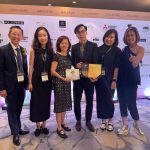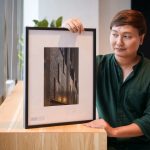29 April 2021
Post-pandemic offices are here – and they’re all about health and flexibility. Social distancing and new ways of work have changed the definition of a great office for good, says China Studio Director, Bertrand Lai.
- Covid has changed the world, and the offices in it. Today, the focus is on healthy workplaces, designed to increase performance while ministering to users’ well-being.
- New offices, like the Dareway IT Campus in China, are designed to maximise sunlight, ventilation, and greenery.
- Equally important are flexible, multifunctional spaces that boost staff interaction.
The world of work has been drastically altered this past year. Social distancing and work-from-home trends have changed how we use offices, and as the needs of workers evolved, so has workplace design. A renewed global focus on health has put the spotlight on what well-being at work looks like, and along with it, altered the definition of what a great workplace is.
Designing for well-being is no longer solely about physical comfort – humidity control or temperature, for example – but also how environments can increase work performance while ministering to users. Since the pandemic, flexible spaces have been the priority, alongside user wellness features like sunlight, ventilation, and greenery.

One post-pandemic office that embodies the new definition of a holistic workplace is the Dareway IT Campus in Jinan, an upcoming 320,000 square metre development housing the headquarters and staff dormitories of Chinese developer Dareway Software. The iconic project is set to be a trailblazer, turning topographical challenges into a well thought-out workplace where architecture, design and utility come together in perfect unison.
The campus’ layout is inspired by the plum blossom, a well-loved flower among the Chinese, symbolising perseverance and the arrival of spring. The buildings are zoned into three environments: work, life, and play. The work area comprises five office buildings, surrounding a garden-topped sunken atrium.

As part of future-proofing, each of the office blocks, as well as the atrium, can be converted into self-sustaining zones if required. All five offices also feature open floor plans with high flexibility, while the five-storey central atrium – designated as a space for informal staff gatherings – is structured for maximum natural ventilation.
As the majority of the site is located 7 to 10 metres below ground level, the buildings have been designed to maximise sunlight penetration. Each office space is no more than 12.5 metres away from a window, creating a conducive working environment bathed in natural light, with views of outdoor greenery. On-site facilities such as a gym, yoga room, crèche, and nursing room are available to cater to workers’ health and wellbeing.

Every opportunity has been taken to introduce nature into the work day. A garden loop at the ground level connects all five office blocks. Common facilities such as the cafeteria, gallery, and libraries are located along this loop, which houses various breakout areas located in close proximity to greenery that provide a green respite for rest and conversations. Meanwhile, the flora and plants around the central garden will be carefully curated to showcase the best of Jinan’s seasons: the garden pond will feature water plants in rainy months, and verdant greenery in drier ones.
As society re-evaluates the purpose of workplaces, the focus is now squarely on work wellness, and pandemic-triggered design requirements like flexible spaces and natural ventilation dovetail nicely with the move toward prioritising workers’ physical and mental health. It seems apt, then, that our collective response to the distress the pandemic has brought is to reimagine offices of the future as spaces that protect and champion wellness, promoting adaptability, collaboration, and comfort at work.

Bertrand Lai, Director, China Studio
Bertrand sees architecture as hope. He believes that every architectural act should be purpose driven to enrich the environment and its people. To him, design should celebrate the local contextuality, be culturally sensitive and sustainable.
Share




